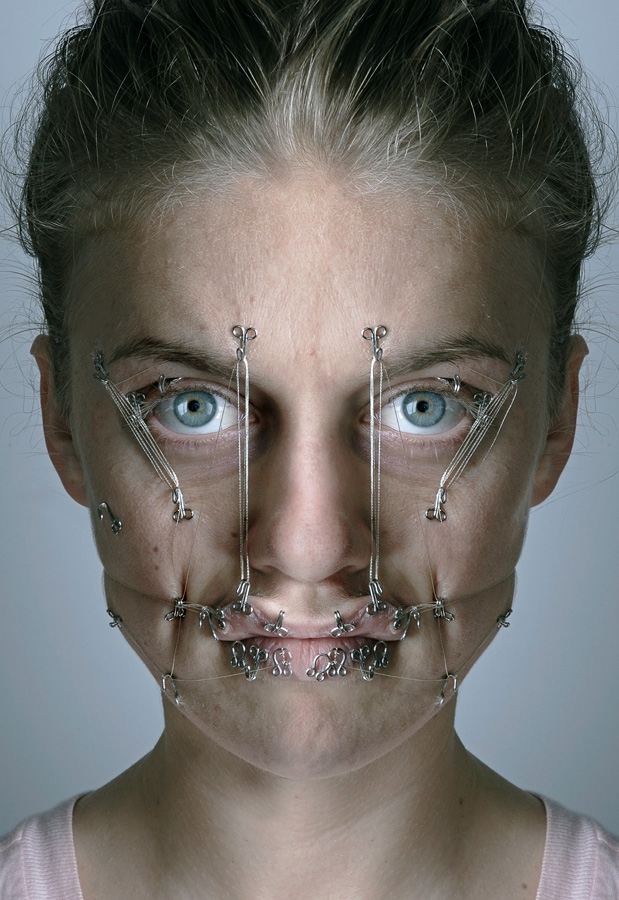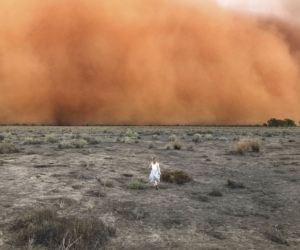Lucy McRae Body Architect
Body architect, designer and science fiction artist Lucy McRae uses film and images to consider how technology could transform the human body in the future.
The first survey exhibition of McRae’s provocative and beguiling work, Lucy McRae Body Architect, explores the Los Angeles-based Australian artist’s collaborations with scientists, through to pop musicians, in her creative research practice over the past thirteen years.
McRae’s work encourages conversations on the future of human existence through the areas of biology, beauty and health. The exhibition will feature seven of McRae’s videos that combine storytelling with speculative science including Future Day Spa and her seminal work Institute of Isolation.
Future Day Spa presents an immersive experience, where participants enter a vacuum pressure chamber, evoking the feeling of being hugged which helped induce the body into a state of relaxation. The hypothetical therapy was designed to prepare human subjects for space travel.
Institute of Isolation is an observational documentary that contemplates whether isolation, or extreme experience, might be used to increase human resilience for space travel. McRae questions what happens to people when they are travelling in a confined space for decades and how people will prepare for the physiological and mental impacts of this experience.
The exhibition also features McRae’s grotesquely beautiful colour digital images created in collaboration with Dutch textile artist Bart Hess between 2007-09. McRae and Hess met at Philips Design in Eindhoven while working in a far future design research lab, the Probes programme, where they speculated on what design technologies might look like in 20 years’ time. In McRae’s and Hess’s images low-tech materials – including balloons, pantyhose, safety pins, grass and bath foam – are used to initiate high-tech conversations about the body. By speculating on fictional technology, McRae and Hess propose a future human body capable of physiological transformations such as colour-excreting skin.
Also included in the exhibition are McRae’s music videos for Australian and Danish pop bands Architecture in Helsinki and Reptile Youth. McRae’s collaboration with Swedish pop-star Robyn is represented by McRae’s iconic image created for the Body Talk album cover.
One of the youngest ever TED Fellows and listed by Fast Company as one of the ‘fifty people shaping the future’, McRae lives between Melbourne and Los Angeles. She has presented at international events, including MIT’s Being Material conference on wearables, and her award-winning science fiction artwork has been exhibited worldwide. In 2018 she was selected as a Young Global Leader at the World Economic Forum.
Tony Ellwood, Director, NGV said, “The work of Lucy McRae invites us to think about the power of human imagination and speculation; to contemplate technology’s expanding dialogue and engagement with the human body into the future. This exhibition presents the work of one of Australia’s most exciting conceptual designers today, positioning design as a tool for proposing ideas and asking of science ‘what if?’”
This solo exhibition follows recent major photography surveys at NGV including Darren Sylvester, Polly Borland, William Wegman and Erieta Attali and kicks off the next season of solo exhibitions, showcasing the work of Australian photographers Polixeni Papapetrou and Petrina Hicks later this year.
Lucy McRae Body Architect is on display from Friday 30 August 2019 to 9 February 2020 at The Ian Potter Centre: NGV Australia at Federation Square. Entry is FREE. Further information is available from the NGV website: NGV.MELBOURNE.







